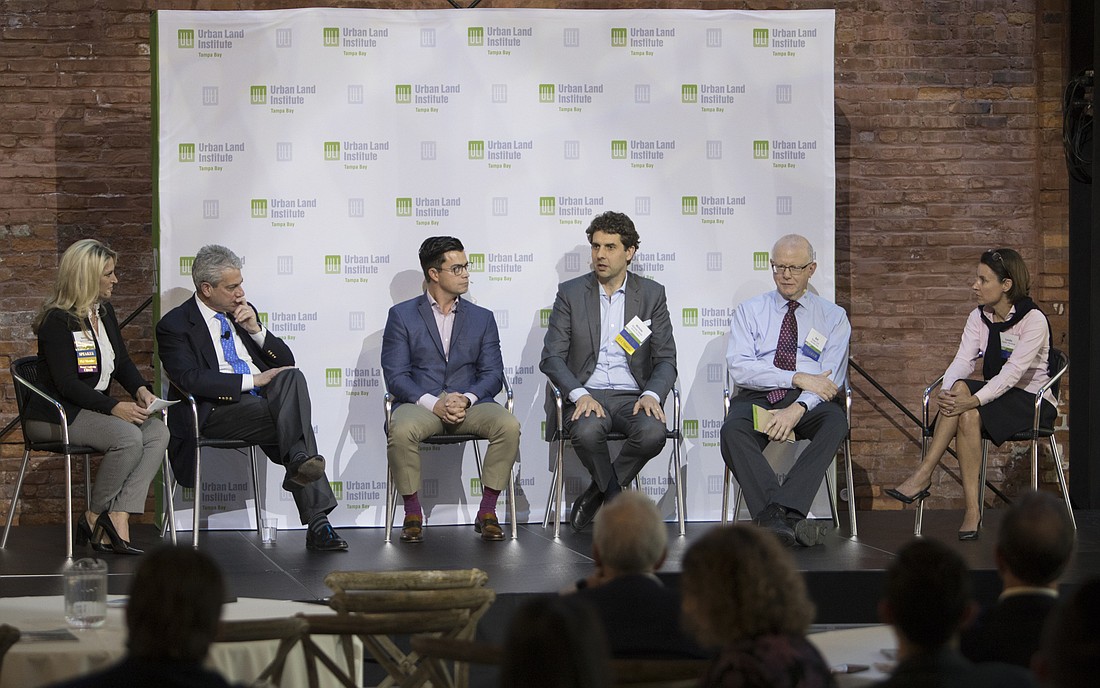- January 14, 2025
-
-
Loading

Loading

Tampa Bay has cracked the Top 10 in a list of emerging U.S. cities with good overall real estate prospects for the first time in the 40 years since the annual ranking has been conducted, a recognition that the two cities’ leadership, developments, planning and Tampa’s enlivened waterfront are paying dividends in both population and job growth.
The joint Urban Land Institute and PricewaterhouseCoopers’ ranking, based on more than 2,400 interviews and various other criteria, put Tampa Bay at 10th nationwide in its Emerging Trends in Real Estate report.
Tampa Bay came in just behind Charlotte, N.C., and six spots behind Orlando, the only other Florida city to crack the list’s Top 10. The Dallas/Fort Worth area ranked as the top 2019 emerging metropolitan area.
Florida also was one of three states, together with Texas and North Carolina, to have multiple cities among the Top 10, the report notes.
Perhaps even more significant than the ranking, however, has been Tampa Bay’s steady march up the “Emerging Trends” list. Last year, for instance, the area ranked 19th.
In 2007, Tampa was No. 35.
“I’ve never seen a city go from thirtysomething to the top 10,” Mitch Roschelle, a PwC partner and the head of the consultant’s National Real Estate Advisory Practice, told a group of more than 500 at a late January ULI meeting at Armature Works, in Tampa.
“Tampa’s success story is remarkable, but not surprising.”
Roschelle attributed much of the city’s standing to its work developing the Riverwalk along the Hillsborough River, which bisects the city, into a pedestrian-friendly, development-oriented space. He describes the Riverwalk as an “irreplaceable asset” that is “the envy of many other cities.”
Tampa Mayor Bob Buckhorn, whose administration has been credited with quarterbacking much of the city’s revitalization and for spurring developments such as the $3 billion Water Street Tampa downtown, agrees the city has come a long way in a relatively short time.
“Everyone had written us off,” Buckhorn says of the Tampa of a little over a decade ago. “Today, we compete on the world’s stage. We’ve completely transformed into a dynamic and growing city.”
Private developers, too, say that Tampa’s positive transformation — both from an economic and population growth standpoint — has prompted their interest and that of others.
“Tampa’s success story is remarkable, but not surprising.” — Mitch Roschelle, PricewaterhouseCoopers
“Tampa today is incredibly strong, both from a job growth and unemployment perspective, and there’s a vibrancy,” says Nicholas Haines, CEO of New York-based Bromley Cos., which is developing a 22-acre tract in Tampa into a $500 million, mixed-use development called Midtown Tampa that will contain at build-out nine separate buildings.
“We think that Tampa is, frankly, undersupplied for what we’re trying to do.”
In addition to apartments, a hotel, a trio of office buildings and retailers that will mostly be new to the Tampa area, Midtown hopes to leverage Tampa’s rise into a so-called “18-hour” city with gatherings including outdoor concerts and classes.
“A lot of the concept is based on the idea that the real estate business is more service based than simply just bricks and mortar,” Haines adds. “It’s something we’re really focusing on.”
From a more macro-economic perspective. Roschelle notes that 80% of the respondents in this year’s ULI/PwC survey say that the commercial real estate industry in 2019 will either be good or excellent, though the percentage of those believing the latter are just half of what was reported in 2014.
But he also warns that economic disruptors — such as Uber and Amazon’s desire for “last-mile distribution” in urban areas to allow for same-day deliveries — could impact both cities and individual buildings not designed to accommodate various changes.
Roschelle also believes the biggest threat to continued economic expansion could come from the U.S.’s inability to fill all of the new jobs that are arising from the continued growth. At present, that number stands at roughly one million nationwide.
“Tampa is in the early stages of its expansion,” Roschelle says. “The tailwinds behind it are far greater than any potential headwinds. Even if other markets see some contraction in the months ahead I don’t think you’ll see that happen here.”
“As far as ‘Emerging Trends’ goes, in the years ahead I think Tampa will continue to move up the list,” he says.
Buckhorn, who is preparing to leave office in April after eight years per the city’s charter, echoes that sentiment.
“Tampa’s best chapter has not yet been written,” Buckhorn told the ULI gathering. “We’re becoming everything that we aspire to be.”
U.S. Markets to Watch
__________________
Other Florida Cities (Out of 79 ranked)
17. Fort Lauderdale
34. West Palm Beach
48. Jacksonville
56. Cape Coral/Fort Myers/Naples
65. Tallahassee
66. Gainesville
74. Deltona/Daytona Beach
Source: Urban Land Institute/PricewaterhouseCoopers’ 2019 “Emerging Trends in Real Estate.”